CDs, tapes, vinyl, downloads, and streaming platforms have all been criticized for their sound quality. While some believe the crackle of the vinyl “makes it sound better,” others are adamant that digital is the only viable option. Truthfully, digital music can achieve greater resolutions, and lossless audio is superior to what you’ve come to expect from your listening experience.
The term “lossless audio” refers to music that is not degraded in any way, contrary to what one may assume from the name. Unlike MP3 files, which may compress and remove data while maintaining excellent sound grade, this format isn’t designed for ease of use or storage.
It is a premium function that calls for further procedures to be taken to hear effectively. You may be forgiven for questioning whether or not it is worthwhile, considering the additional bandwidth required to stream it.
Regrettably, there is no universal agreement regarding whether or not audio with a higher resolution sounds better. As the audiophile community continues to disagree, blind tests show that many listeners cannot distinguish the difference.
Nevertheless, you may still find that lossless sound better if you mix music and have a good pair of headphones or studio monitor speakers.
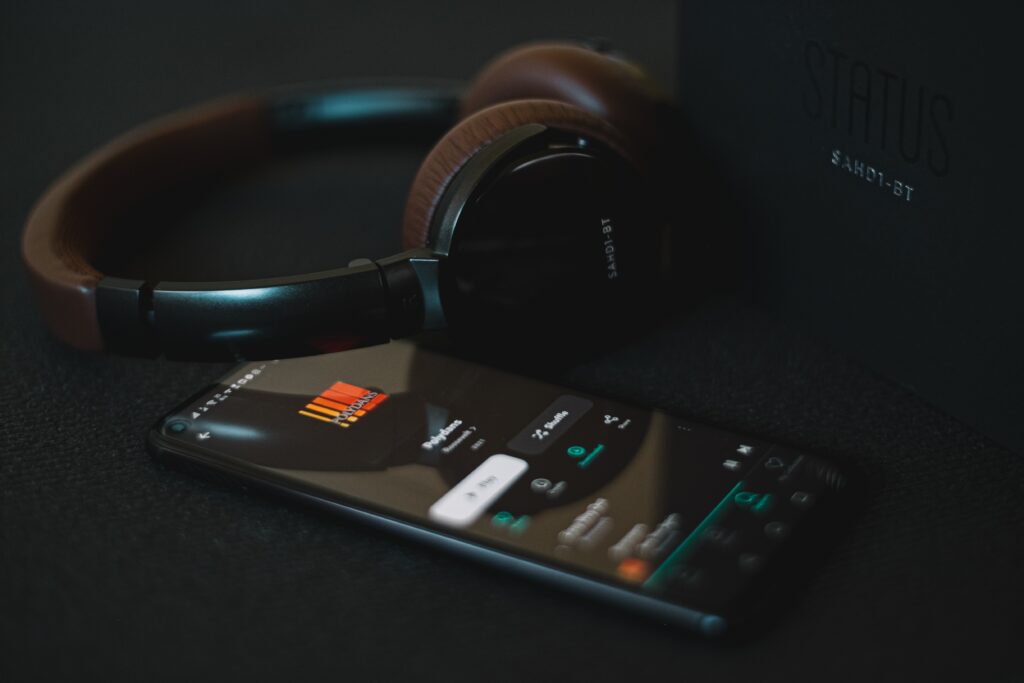
What are the benefits of lossless audio?
- FLAC is the best performing on average
- It beats the lossy formats by a long way when it comes to audio quality
- FLAC has smaller file sizes than WAV
If you’re trying to decide between WAV and FLAC, you’ll need to understand each format’s advantages and disadvantages to make an informed decision. Let’s begin with defining FLAC to assist you to decide whether FLAC or WAV is the best format for your needs.
This stands for Free Lossless Audio Codec or FLAC. Because FLAC is referred to as being “lossless,” you may compress other audio formats into FLAC without sacrificing any quality.
FLAC, created by the Xiph.Org Foundation and released in 2001, has this benefit. Audio formats may be reduced to roughly 60% of their original size, making them simpler to keep or transport, as well as much smaller.
Despite their reduced size and more flexibility, FLAC maintain the same degree of experience. FLACis a free and open-source format, so you may experiment with it to your heart’s content in the argument between WAV and FLAC.
Regarding compatibility, the great majority of current media players will be able to play FLAC without a hitch. FLAC, on the other hand, has certain compatibility concerns with specific devices and a restricted bit depth and sample rate, so it’s not ideal. If you need to, you can convert WAV to FLAC.
What are the differences between lossless and lossy audio?
Through lossy compression, a lossy format may be as little as one-tenth of the size of a lossless format. As a result of the lossy compression process, there is always a loss of audio data.
Since the data is gone, the audio resolution is degraded and no longer matches the fidelity of the original. It might also result in undesired track distortions that make your experience less enjoyable. Because of this, you can save a lot more songs on a device or platform.
The most common scenario is ripping a CD into an MP3. A sampling bitrate of bit/44 (44.1 kHz) and a bit depth of 16 bits are considered CD-quality. Using these figures, CD audio has a bitrate of 1,411 Kbps (the amount of bits/data stored per second).
The bitrate of a CD is always the same. However, the bitrate of an MP3 may vary from 96 to 320 Kbps. It’s clear that, even when compressed to the maximum bitrate, the audio resolution in MP3 is far worse than it is on CD. On the other hand, lossless compression may reduce audio to a fraction of its original size without sacrificing quality.
Format conversion is also possible, such as from FLAC to WAV, without sacrificing sound quality. To put it simply, lossy and lossless compression is different.
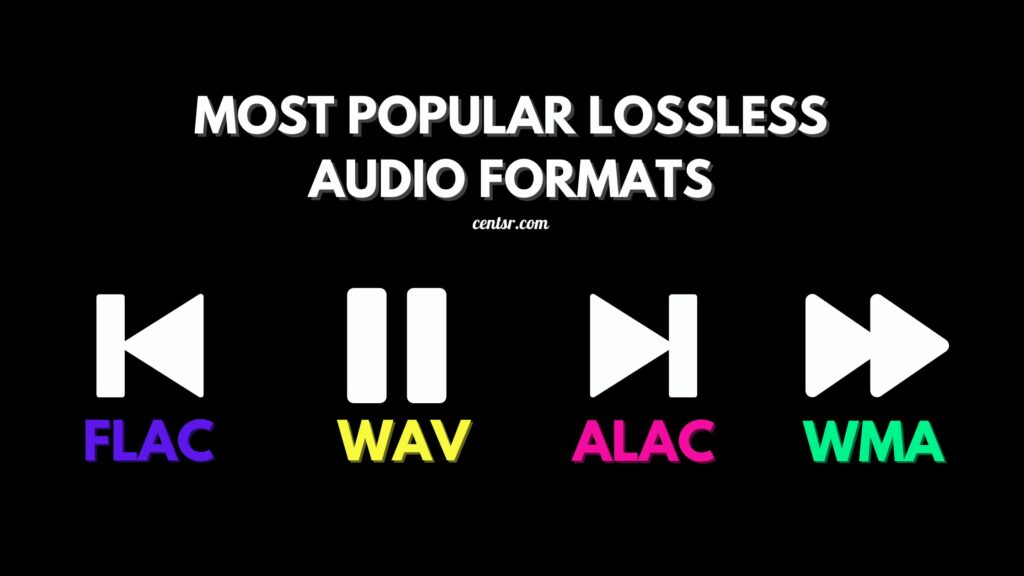
What are the most popular lossless audio formats?
Many lossless formats are available, like WAV, FLAC, ALAC, and WMA, which you may already have on your computer. So, let’s look at their capabilities and why they have become the most widely used audio formats.
FLAC is the format with the most extensive user base. It is open-source, which means that any company can use it. Tidal and Amazon Music are two examples of streaming services that use FLAC as the foundation for their lossless music archives.
High-resolution sample rates are supported, and the format uses half the space of WAV while storing metadata. It is the best option for downloading and storing high-resolution albums. The drawback is that Apple does not support it.
The Waveform Audio File Format, or WAV for short, is the following format on our list. It is the most widely used high-resolution audio format. CDs are encoded in this standard format since it is the most common. Despite the excellent sound experience, uncompressed formats will take up a lot of storage space (especially for hi-res).
On the other hand, ALAC, which means Apple Lossless Audio Codec, was created by Apple and employed lossless compression. As a result, ALAC is about 60% smaller when compressed than the source file. Their source audio is reproduced in its entirety when they are played again in their original format. With this, you can enjoy ALAC on your iPhone.
Last, WMA is an acronym for “Windows Media Audio.” MP3 was Microsoft’s retort to that format. Similar to ALAC, it endeavored to improve the sound experience of MP3 and successfully produced better results while maintaining the same bitrate.
However, its popularity is not as high as that of MP3 and ALAC. As a result, it does not have the same level of compatibility with other formats’ hardware and applications.
Lossless audio is produced at a resolution that is at least equivalent to that of a CD, which is 16 bits wide and bit/44 (44.1 kilohertz) in frequency. It may, however, be able to go even further. Because of their bigger file sizes, high-resolution tracks will consume a more significant amount of mobile data and bandwidth when they are streamed.
The most widely used lossy audio format is MP3, which stands for MPEG Audio Layer III and is still widely used today.
The primary objective of the MP3 format is to accomplish three things. It eliminates all of the sound data that lies outside the audible range of typical people, lowers the grade of sounds that are difficult to hear, and compresses all of the remaining audio data as effectively as humanly possible.

What is the best way to store audio files?
- FLAC is the most widely used lossless audio format.
- Most of us won’t actually need to choose a lossless format – it’ll just come down to which service and devices you want to use.
FLAC is much like M4A. FLAC, unlike M4A, is open source and has a more effective compression method that can lower the file size by 50 to 70 percent. Audiophiles use this format to store their collections in the best possible. Many devices and applications may be used because of their open-source nature.
ALAC is Apple’s response to FLAC. It can also handle high-resolution audio, like FLAC. Metadata is supported and takes up less space than a WAV file. It differs from FLAC in that it is natively supported by iTunes and iOS devices, while FLAC is not.
The terms “lossless” and “uncompressed” should not be used interchangeably. Consider the FLAC format, for instance. They are half the size of a WAV or AIFF, yet they retain all of their high audio grade. As high-resolution audio files, digital FLAC may provide sound superior to CD quality (up to 32-bit, 96 kHz) (16-bit, 44.1 kHz).
It’s possible to keep your digital tracks in FLAC without sacrificing, but you’ll still need to be a little more careful with your storage space. Regarding Mac and iOS users, ALAC is the finest FLAC replacement.
In contrast, if you want lossless audio, you’ll need WAV or AIFF, which is available for Mac and iOS users and those who wish richer metadata support. The quality of a lossless, uncompressed format can never be matched by lossless compression. There’s that huge difference.
To enjoy your favorites at their finest, you must be aware of your storage capacity. A digital audio format that is both compact and top-tier is impossible to come by.
Choosing the correct digital format for a song will always be subjective. This might include your intentions for editing the tape or putting your work up on the internet. And with the correct codec, you can continually improve your chosen audio format and select the right streaming service to ensure the best experience when you put on your headphones.
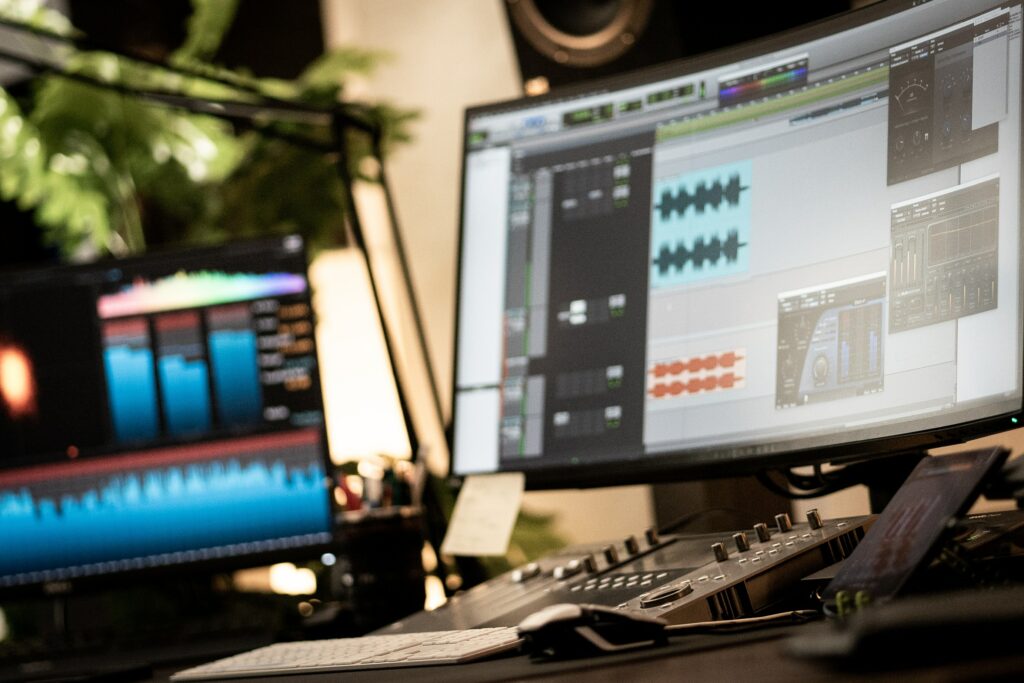
What are some common problems with lossless audio files?
- Cannot be edited without re-encoding and losing quality
- File sizes can be large
- Not all playback devices support all lossless formats
There isn’t a single lossless file format. However, some are more significant than others. File formats, not wireless (or Bluetooth) codecs, will be this article’s focus for clarity.
FLAC
One of the most widely used lossless formats is FLAC, which is open source. It was created in the early 2000s as an available format that anybody may use. FLAC ripping results in reduced file sizes than other formats, even though FLAC is a lossless format.
ALAC
Apple Music will employ ALAC to save lossless music. However, ALAC is compatible with iPhones and iOS devices, but FLAC is not, even though they are both lossless audio formats.
AIFF
AIFF was created in 1988 by Apple Computer, Inc. AIFF isn’t as popular as other formats. This is partly because AIFF files aren’t the most efficient storage capacity. They’re enormous.
WAV
WAV was established by IBM and Microsoft in 1991 and has been around since. WAV is less efficient than FLAC and ALAC because of its large files. If you use Windows, you’ll find it.
DSD
Philips and Sony created DSD (Digital Stream Direct) for their SACDs (Super Audio CDs). It’s a hi-fi format but consumes a lot of storage space. It’s doubtful that this will be utilized much for streaming, but it is for downloads, so it isn’t completely useless.
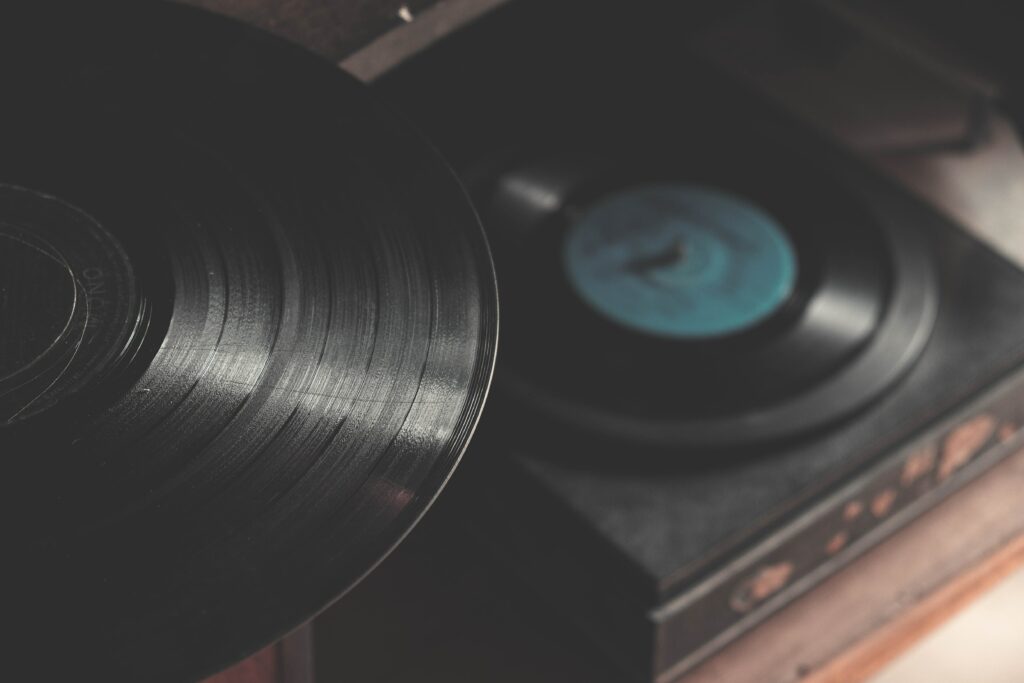
What are some tips for getting the most out of lossless audio?
- Use a DAC that can handle high-resolution audio
- Connect over Wi-Fi for lossless audio streaming
You’ll need to download a new sort of audio format to play lossless music. The sampling rate and bit depth are far greater than on a CD.
You may be able to listen to sample bitrates of up to 192 kHz, depending on the speed of your connection and the capabilities of your listening device, especially with Bluetooth headphones. You’ll need a digital-to-analog converter or codec that can handle more excellent sample rates to get the most outstanding results with these settings.
Consumer electronics, such as laptops and smartphones, often have limited audio output options. This goes for accessories like speakers and headphones as well. High-res audio interfaces usually support sample bitrates of up to 96 kHz. You may have to spend money on high-end audio converters or DACs if you want to obtain the greatest possible audiophile experience.
For streaming purposes, lossless compression reduces file size, but you’ll need a high-speed connection. Also, keep an eye on your data use if you’re using a mobile device to stream high-resolution music. Depending on your settings, one minute of playing might have a file size of up to 8 MB!
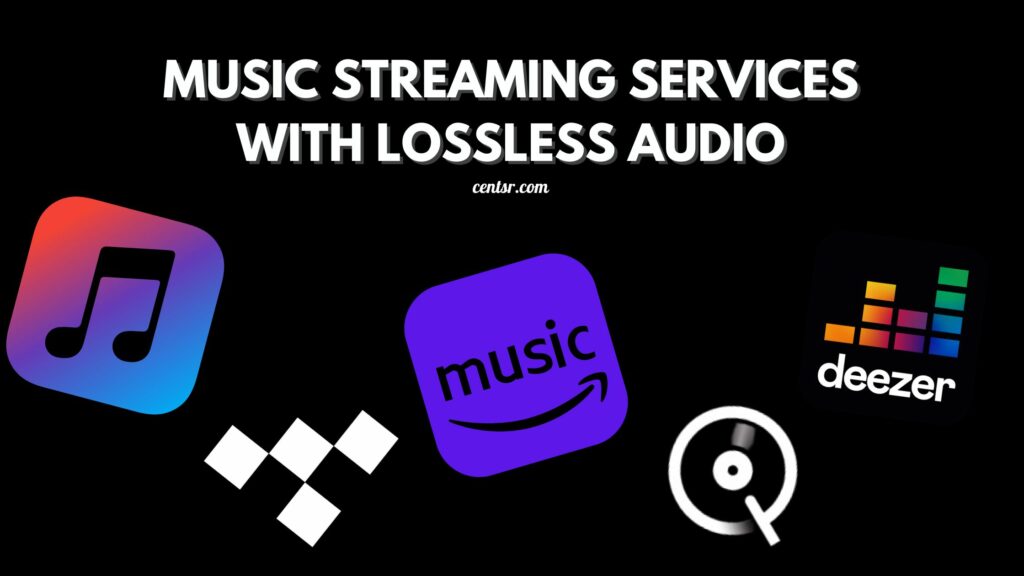
What music streaming services have lossless audio?
Another factor to having a completely amazing experience is buying a subscription to the perfect streaming services. In the past, the lossless audio industry was a small subset. In contrast, there are now many more choices for excellent tracks streaming via the internet.
Wondering if Spotify offers this studio experience? Not to be a bummer but Spotify doesn’t have FLAC yet. However, there is news about Spotify HiFi which is solely for lossless streaming. If you’re a Spotify fan, you might want to stay tuned in to their release date.
Aside from Spotify, there are more services that do have lossless like Tidal and Apple Music. Let’s take a closer look at each one and see what it excels at.
Tidal
When it comes to music streaming services, Tidal was the first and best.
The site continues to provide enticing subscriber plans that include audio of high quality and does not use any lossy compression. It has an extensive collection of MQA-enabled high-resolution files up to 192 kHz that may be streamed or downloaded.
In addition, it has one of the most sought-after features among audiophiles: bit-perfect audio. It indicates that the audio files are not altered by the audio player itself when they are being played back.
However, despite its higher price tag, it’s one of the most popular streaming services among audiophiles.
Qobuz
If you’re looking for an excellent streaming service, Qobuz is a good alternative. With Qobuz’s most expensive subscription plan, you can get high-resolution music downloads, making it stand out from the crowd.
Qobuz isn’t available in all countries, so you may never get the opportunity to try it out yourself.
It also has a few omissions as compared to other players’ catalogs. However, if you’re a fan of lossless audio, it’s worth a look because it promises to have more high-resolution releases than any other streaming service.
Deezer
Another streaming service for lossless is Deezer. Lossless streaming in CD quality 16 bits 44.1 kHz is available through Deezer. CD-quality is the maximum that can be achieved when streaming on Deezer; however, the high-fi tier provides access to an immersive 3D listening format called 360 Reality Audio. If you’ve ever wanted to immerse yourself in the music in a more exciting way, this is the technology for you.
Amazon HD
For over a decade, a music streaming service has been part of Amazon’s ever-expanding platform. Although they launched Amazon Music HD in 2019 for a slightly expensive monthly charge, high-resolution lossless tracks were available.
Their streaming service, Amazon Music Unlimited, currently offers all of its features at comparable prices to those offered by other streaming services. While you’ll be limited to just 16-bit, 44.1 kHz lossless CD quality, millions of files are accessible in higher resolutions up to 24 bit, 192kHz.
Though the service has some excellent features, the user interface and discovery experience on Amazon Music Unlimited fall short of those on Apple Music and the competition.
Apple Music
The news that Apple Music will soon support lossless audio quality has caused consumers a significant amount of excitement.
Throughout the years of iTunes and the MFiT standard for digital new releases, Apple has maintained a solid commitment to top-tier sound. It is making strides toward the next generation with recent innovations such as this and by providing cutting-edge spatial audio.
Now that Apple Music supports hi-res lossless, there are two main options available in the app: lossless for 24-bit/48 kHz and hi-res lossless for 24-bit/192 kHz
Despite the fantastic specifications, the best thing is that regular subscribers don’t have to pay additional money to access the hi-fi alternatives. To play lossless audio, you’ll still require the appropriate equipment; however, you won’t be charged an additional monthly fee.
Final Words
The best way to describe lossless audio is that it’s the closest you can get to listen to an original recording without a loss of quality. When we talk about resolution, we’re referring to the number of bits used to store a file. A CD can hold up to 20MB per second of data, which translates into approximately 700 MB of space for a 2-hour song. But, with digital audio, you can store up to 24 bits per sample, or 24,000 MB of data for a 2-hour song. With lossless audio, you can store even more information than that!
In conclusion, if you want to create a truly satisfying experience as you stream music, you should make sure that your online music is optimized for high-resolution audio. Lossless audio files are of the best quality, and they are the only ones that will retain the highest resolution of any of the audio files that you can listen to.
